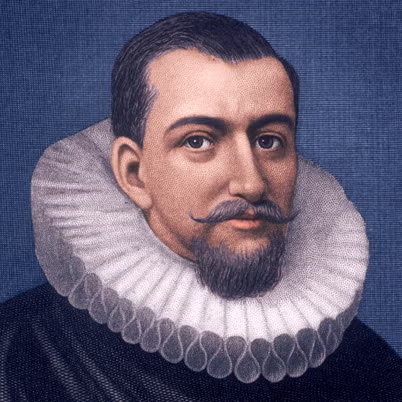
Table of Contents
Who Was Henry Hudson?
Henry Hudson, an English explorer believed to have been born in the late 16th century, is renowned for his attempts to find an ice-free passage to Asia. He undertook two unsuccessful voyages before embarking on a pivotal third expedition in 1609, financed by the Dutch East India Company. This journey led him to the New World and the river that would bear his name. On his subsequent voyage, Hudson encountered the body of water that would later be known as Hudson Bay.
Early Life
Considered one of the most prominent explorers of his era, Henry Hudson was born in England around 1565. Despite his relentless search for a passage to Asia, Hudson’s endeavors ultimately facilitated the exploration and settlement of North America. His life prior to his inaugural command in 1607 remains largely undocumented, contributing to his elusive historical figure. It is widely believed that Hudson gained seafaring knowledge through practical experience, likely from fishermen or sailors. His navigational skills were sufficiently developed by his late twenties to warrant his appointment as a ship’s commander. Before 1607, he likely served aboard various vessels before securing his own command. Reports suggest that he was married to a woman named Katherine and that they had three sons.
First Three Voyages
Hudson undertook four significant voyages during a period marked by fierce competition among nations and companies seeking efficient trade routes, particularly to Asia and India. In 1607, the Muscovy Company, an English trading firm, tasked Hudson with discovering a northern route to Asia. Accompanied by his son John and the navigator Robert Juet, who chronicled their voyages, Hudson set sail. Despite a spring departure, the crew faced treacherous icy conditions, which curtailed their journey. Although they explored some islands near Greenland, they ultimately returned to England. However, Hudson’s reports of numerous whales in the region opened new hunting opportunities.
In 1608, Hudson attempted again to navigate the elusive Northeast Passage. He reached Novaya Zemlya, an archipelago in the Arctic Ocean north of Russia, but was thwarted by impenetrable ice, forcing him to return home without achieving his goal.
In 1609, Hudson joined the Dutch East India Company as a ship commander. He took command of the Half Moon with the objective of discovering a northern route to Asia via Russia. Once again, ice obstructed his passage, but rather than return home, Hudson chose to explore westward, potentially inspired by reports of a passage to the Pacific Ocean from North America, as suggested by fellow explorer John Smith.
Crossing the Atlantic, Hudson and his crew landed in July at what is now Nova Scotia, where they encountered local Indigenous peoples and engaged in trade. Continuing down the North American coast, they reached as far south as the Chesapeake Bay before turning back to explore New York Harbor, an area previously visited by Giovanni da Verrazzano in 1524. During this exploration, Hudson’s crew had conflicts with local Indigenous groups; tragically, a crew member named John Colman was killed by an arrow, with others sustaining injuries.
Following Colman’s burial, Hudson and his crew ascended the river that would eventually carry his name, exploring as far as present-day Albany. They observed the lush lands teeming with wildlife and interacted with Indigenous communities along the riverbanks.
On their return journey to the Netherlands, Hudson was intercepted in the English port of Dartmouth, where the authorities seized his ship and detained the English crew members. Frustrated that he had been exploring for a foreign entity, English authorities prohibited Hudson from collaborating with the Dutch again. Nonetheless, undeterred, Hudson sought English investors for another voyage, which would ultimately prove fatal.
Final Journey and Death
In April 1610, Henry Hudson departed England aboard the ship Discovery, accompanied by his crew, which included his son John and Robert Juet. They navigated across the Atlantic Ocean, skirting the southern tip of Greenland before entering what is now known as Hudson Strait. Their exploration led them to another namesake, Hudson Bay. As they traveled southward into James Bay, Hudson encountered a dead end.
By this time, tensions had escalated between Hudson and several crew members, exacerbated by their entrapment in ice and dwindling supplies. Forced to endure the harsh winter conditions, the crew’s discontent grew. When June 1611 arrived, improved conditions allowed the Discovery to set sail again; however, Hudson did not return home. Shortly after departure, a faction of the crew, including Juet, staged a mutiny, casting Hudson, his son, and a few loyal crew members adrift in a small boat. It is believed that Hudson and the others perished from exposure in or near Hudson Bay. Although some mutineers were later tried, they were acquitted of their actions.
Legacy
Hudson’s expeditions paved the way for subsequent European explorers and settlers in North America. In 1625, the Dutch established a new colony named New Amsterdam at the mouth of the Hudson River and developed trade posts along the adjacent coasts.
While Hudson did not achieve his goal of reaching Asia, he is remembered as a tenacious early explorer whose endeavors significantly fueled European interest in North America. His legacy endures today, with his name adorning numerous waterways, educational institutions, bridges, and towns across the continent.
